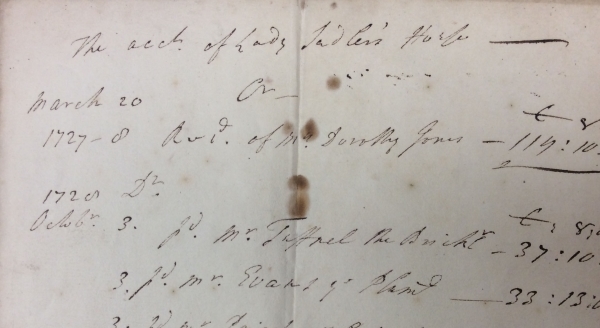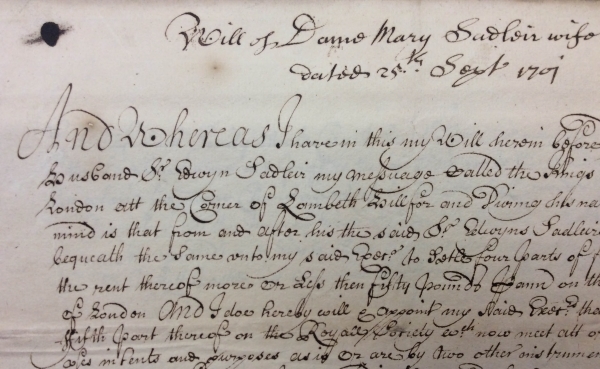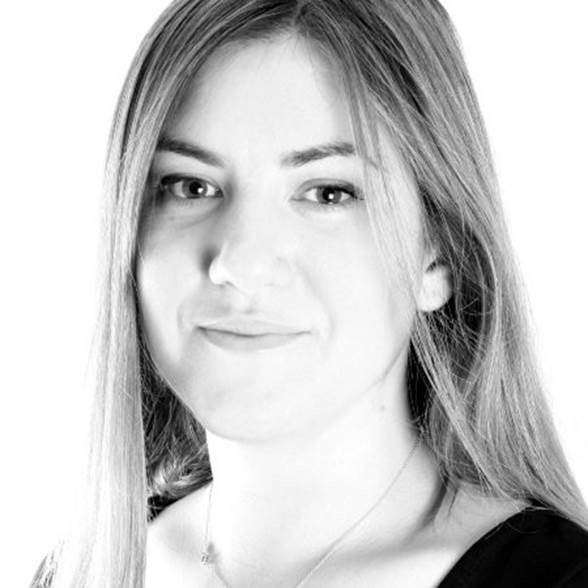Keith Moore discovers a remarkable early example of financial support for the Royal Society, in the form of a bequest by Lady Mary Sadleir which established the Croonian Lecture.

Recently, the scientist Jennifer Doudna gave an outstanding Croonian Lecture at the Royal Society on ‘Rewriting the code of life: CRISPR systems and applications of gene editing’. If you missed it, you can catch it here. However, a little idle curiosity has led me to think that the Society might need to do a little editing as well, on the name of that particular, very famous lecture series.
The Croonian Lecture is named after the physician William Croone FRS (1633-1684), who was Professor of Rhetoric at Gresham College, the Society’s first home. From the first event in 1738, the talk has been given by some of the great names in medical science and biological systems, including the surgeon John Hunter (1728-1793), the magic bullet doctor Paul Ehrlich (1854-1915), the histologist and embryologist Albert von Kölliker (1817-1905) – and now Professor Doudna.
But hold on, I hear you say: Croone died in 1684 and it took another fifty years to create an annual talk? What happened? Well, in one of the more remarkable examples of benevolence in support of the Royal Society, the bequest that allowed the lecture wasn’t made by Croone at all – but by his former wife, originally Mary Lorymer, who remarried on Croone’s death to become Lady Mary Sadleir (d.1706). William Croone was buried, but not forgotten, by ‘his sorrowful Widow’ in her own family vault beneath St. Mildred, Poultry, alongside her father and mother, Alderman John Lorymer and his wife Frances.
I knew the basic details of Mary Sadleir’s story already, but was reminded of it by coming across one of the original financial documents in the Society’s archives – an account of repair work being done on Lady Sadleir’s house. Under the terms of her 1701 will, the rent from this property was left to her second, surviving husband, Sir Edwin Sadleir (1656-1719), for his use during his lifetime. Upon his decease, the funds generated would go to the Royal Society and the Royal College of Physicians, to provide for lectures.

Getting plastered: repairs to Lady Sadleir’s house, the King’s Head Tavern, 1727. Royal Society MM/13/27 (detail)
If the name Sadleir means anything to you, then it might be because there is a Sadleirian Professorship of Pure Mathematics at the University of Cambridge. It was established by – you’ve guessed it – Lady Mary Sadleir. I have to say that within the few biographical details we have on her, there is a picture of a rather impressive woman. Mary seems to have been independent-minded and charitable (in years when the Croonian wasn’t given, the fund’s residue went to the poor of the parish). She created three major scientific awards and still cared for the wellbeing and legacy of two husbands. Naturally, I did a rapid web search to see if I could find out more – and managed a little cartoon eye-rubbing when her portrait popped up.
I should explain that often, we have trouble finding images of historical women associated with the Royal Society and therefore to discover one hiding in plain sight (at the National Trust property, Sutton House) was thrilling. The painting was commissioned from the artist Mary Beale (1633-1699) and is paired with that of Sir Edwin Sadleir. William Croone was also portrayed by Beale and it is this painting, owned by the Royal College of Physicians, that is used on the Royal Society’s website to publicise the Croonian Lecture. Why not have Mary Sadleir too? The campaign starts here…
My predecessor as Librarian, James Hudson (1804-1859), provided perhaps the most interesting summary of the Croonian as part of a review published in in 1834. He wrote:
‘The epithet Croonian, which has hitherto (with a few exceptions) applied to this lecture, instead of Sadleirian, to which in justice to its Founder it seems to be entitled, appears to have originated in a misconception of the Council …An examination of the original Will of Lady Sadlier, as well as that of Dr Croone, having been made at Doctors’ Commons…it appears conclusive that this Lecture was strictly and independently founded by Lady Sadleir, without the least reference being made by her to the supposed design of Dr Croone…’
Rather wonderfully, the property in Lady Sadleir’s will – the house I mentioned – was a pub. If you look at an old map of London, you’ll see it was on Old Fish Street, very close to the Royal Society’s early eighteenth century home at Crane Court. I like to think that one or two Fellows (after a hard day’s science) might have paused for a moment under the lamp lit on Society meeting nights at the entrance to Crane Court and then turned the corner for the short walk to the King’s Head Tavern. And perhaps they raised a glass to toast Lady Mary Sadleir – patron of science.

Copy of Mary Sadleir’s 1701 will. Royal Society MM/13/23 (detail)







